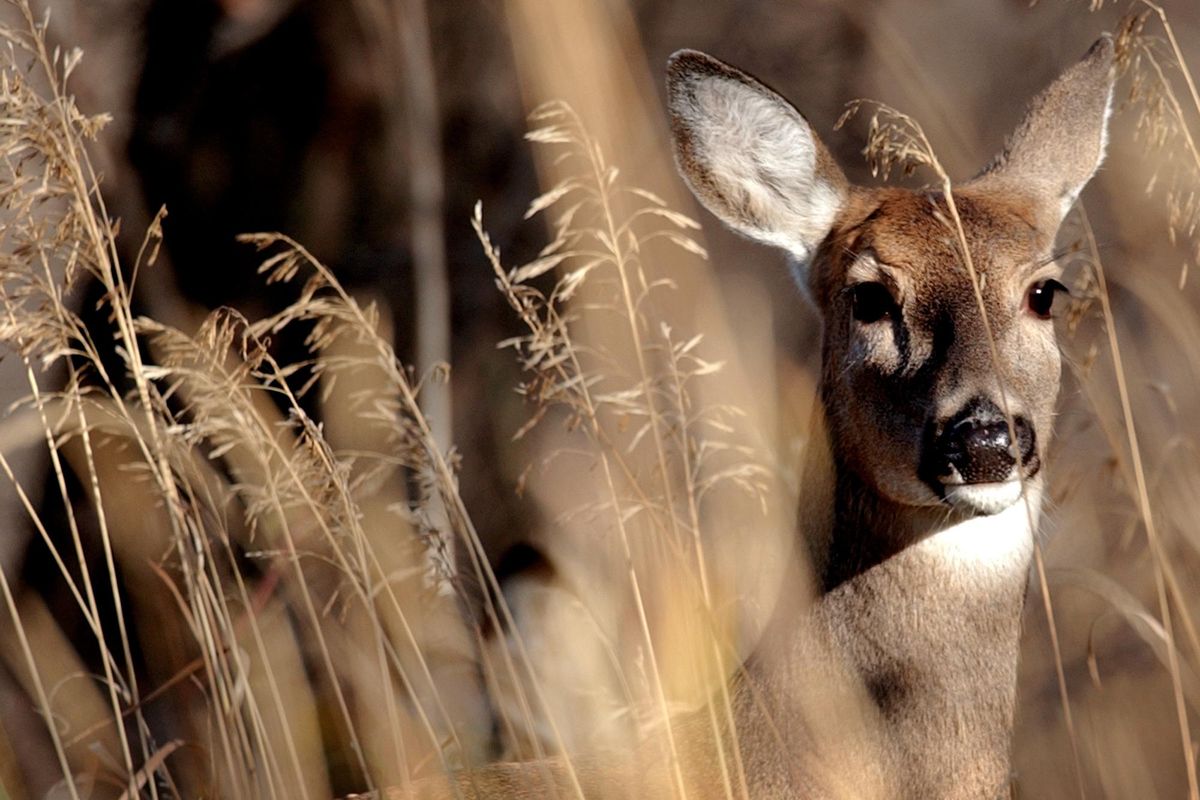Viral disease killing hundreds of deer in the region

A drought-stoked outbreak of viral disease first detected in August is killing hundreds of deer from the Colville area south to the Lewiston region, wildlife biologists from Washington and Idaho say.
At least 68 whitetails dead from bluetongue have been collected in the town of Colville, Terry LeCaire, manager of the city’s streets department, said Friday.
Bluetongue has killed mostly white-tailed deer, but in recent weeks the disease also has been confirmed in some dead mule deer.
The animals can die in a few days once symptoms or mouth and nasal discharge occur.
Bluetongue is closely related to epizootic hemorrhagic disease (EHD), which is common in whitetails in September but usually on a small scale in isolated areas, said Kristin Mansfield, Washington’s state wildlife veterinarian.
Wildlife officials are especially concerned that this year’s outbreak is the bluetongue variety of hemorrhagic disease, which can affect a wider range of animals, and that it’s significantly more widespread than in the past.
The disease will continue to take a toll until a hard frost occurs to kill the gnats that deliver the disease to the deer, Mansfield said.
“The distinction between (bluetongue) and EHD is important,” said Charlie Powell, spokesman for the College of Veterinary Medicine at Washington State University. “Bluetongue can affect international trade (of livestock), while EHD is uncommon in cattle.”
However, bluetongue is present in Great Basin livestock every year, Idaho’s state wildlife veterinarian Mark Drew said. “Some varieties are nastier than others,” he said, noting that no livestock deaths had been reported from bluetongue in Idaho this fall.
The WSU lab has confirmed bluetongue virus in 45 whitetail samples submitted from Washington and Idaho, plus one mule deer in Asotin County and another in Garfield County.
Bluetongue also was confirmed in one dead bighorn sheep in Nez Perce County, Idaho, Powell said.
Dead or sick deer are more likely to be reported in more populated areas, said Dana Base, Washington Department of Fish and Wildlife biologist in Colville. Far more deer in rural areas are likely to be sick or dying undetected, he said.
Cases have been confirmed in eight Eastern Washington counties and four counties in the Clearwater region of Idaho.
Until last week, the outbreak had been documented as far west as the Davenport area, where whitetail range gives way to mule deer country, said Michael Atamian, Fish and Wildlife biologist in Spokane.
However, at least three cases of mule deer dying of bluetongue in the Moses Lake area were confirmed this week, Mansfield said.
“One Palouse River landowner called (WSU) saying he has counted 30 dead whitetails on his property,” Powell said.
Paddlers have reported dead deer along the Little Spokane River, he added.
Southern Spokane County rancher Mike Proff confirmed 18 dead whitetails on his land near Plaza.
“My neighbor has seen some, too, and there are likely many more,” Proff said.
“Sometimes they disappear so quickly you can’t make a good count. I found two dead next to each other one day. The next day I went out on my four-wheeler and they were gone, completely eaten by coyotes and scavengers.”
While exact numbers can’t be compiled, the extent of the outbreak has biologists concerned.
“Bluetongue and EHD probably affect deer every year to some degree, but in my 17 years working in this district, this is the widest I’ve seen the problem spread with lots of hot spots,” Base said.
LeCaire said his street department staff collected 81 deer dead from EHD within Colville city limits in fall 1996. That was a year of spotty but not widespread disease reports, wildlife biologists say.
However, the following harsh winter was devastating to northeastern Washington deer, requiring years to rebuild populations, Base said.
Idaho Fish and Game Department officials have been fielding reports of dead whitetails for weeks from Moscow to Grangeville, said Jen Bruns, department spokeswoman in Lewiston.
Woody Myers, a Washington Fish and Wildlife research biologist, said the incidence of disease appears to be severe in most affected areas.
“This year’s outbreak is very widespread across far Eastern Washington,” said Myers, who’s working on a multiyear whitetail study.
“Mortality rates for whitetails that contract the virus are very high – 80 to 90 percent,” Myers said.
Significant Eastern Washington EHD outbreaks also coincided with drought conditions in 1988 and 2004, Myers said.
Whitetails in the Kamiah, Idaho, area required at least three years to rebuild populations after a major EHD outbreak in 2003.
“This year, we’ve had the perfect storm for outbreaks on account of the long drought and high temperatures, which probably favored the reproduction of the Culicoides gnats that carry the EHD and bluetongue virus,” Base said.
“We’re finding dead whitetails just about anyplace the deer get around mud, which is where the gnats are produced,” Atamian said.
The agencies are monitoring the outbreaks, mapping reports from the public and taking tissue samples in new suspected outbreak areas to confirm cause of death.
Bluetongue and EHD are spread by biting gnats, not from deer to deer, and are not transmissible to humans, Mansfield said.
Nonetheless, Fish and Wildlife discourages hunters from shooting and consuming animals that are obviously sick.
“This is the worst outbreak I’ve seen in my 13 years with the agency,” Mansfield said.
The impact of the outbreak on fall hunting seasons isn’t clear, Base said.
“At the end of last year, we decided deer numbers had finally reached the point we could liberalize hunting on antlerless whitetails – give youth, senior and disabled hunters the entire season to shoot a doe,” Base said. “When the winter turned out to be mild and deer survival was good, we were feeling good about that decision.”
Emergency hunting season adjustments are difficult to enact and enforce and are not anticipated, wildlife officials say.
“Now this (disease) happens and we’re watching closely. Even if the disease progresses, trying to change seasons at this point wouldn’t be an easy call,” Base said.